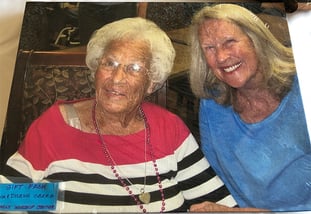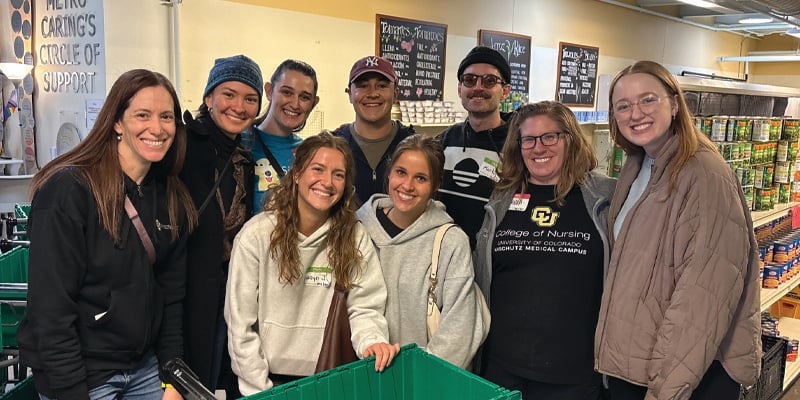“COVID helped persuade me to take my mother out of a nursing facility and move her into our home with hospice,” said Debbie Mitchell, who transitioned her 96-year-old mother from Anthem Memory Care in Littleton, Colorado to a private home setting in March 2020, just as the pandemic was beginning to hit. The latest data from the National Hospice and Palliative Care Organization is from 2018 and shows that the number of patients in hospice or a nursing home setting has remained steady. However, 2020 data is not publicly available yet. So, the full impact of the pandemic on nursing homes, hospice facilities, and home care is not known.
"We are seeing that most people—including people with COVID-19—want to stay at home,” said Edo Banach, president & CEO of the National Hospice and Palliative Care Organization. “Anecdotally, patients and their families are fearful. They don’t want to go to the hospital or nursing homes unless they need to, and they want to be able to visit and hug their loved ones. Overall, there does seem to be an acceleration of the trend toward home-based care.”

Debbie Mitchell at home with her mother |
Response to COVID-19 in the Community
In mid-March, Anthem Memory Care notified Mitchell and others that COVID-19 was in the community where her mother resided. Mitchell immediately contacted the facility and asked if her mother had been exposed. “They said, ‘yes.’ And because my mother is very social and mobile it was challenging to isolate and protect her. She also has dementia and doesn’t understand the meaning of social distancing or wearing a mask,” said Mitchell. Consequently, she and administrators had a frank conversation and within hours, her mother was discharged and on her way home with hospice. “They were honest, which I appreciated. They didn’t feel they could keep her safe. And I agreed.”
>This same phenomenon continues to play out at many nursing home facilities throughout the nation. Vaccines are helping, but the trend of taking loved ones home is continuing. And it’s not just because of the fear of having access. According to Banach, “We think this trend will continue because of economic reasons, in addition to patient preferences. Home-based care is less expensive.”
Factors Contributing to the Increase in Home Care
Bristol Hospice has seen an increase in demand for home-based care, said executive director Wendi Dammann. She said, “In the wake of COVID, so many patients and families had to make difficult decisions that were right for them to keep their loved ones safe.” Factors making it easier for families to care for loved ones at home included working remotely, having more time, and being more comfortable with hospice. Hospice is a service that is provided in whatever place the patient calls home – that could be a nursing home, assisted living, independent living facility, or residential home.
Before the pandemic, many families hesitated to care for their aging relatives at home because of the logistical challenges, including work schedules, complicated medical regimens, and juggling the needs of younger family members with those of older loved ones. Many thought they did not have the skills to take care of their relatives adequately.
Fear of Access Leads to Home Care
Post-pandemic, families are choosing to care for loved ones at home because of the fear they won’t have access to them. “I didn’t want to miss out on opportunities to see my mother. I was also worried that her condition would deteriorate because she was being restricted to her room as the facility sought to limit the potential for the virus to spread,” said Mitchell.
Of course, like the majority of Americans, Mitchell thought the living arrangements would be weeks, maybe months, not more than a year. “But Bristol helped prepare me,” said Mitchell. “It’s been extremely challenging – especially from a caregiver’s perspective. Education and knowledge of what to expect in taking care of a loved one who has dementia are so important.”
|
CU College of Nursing student |
Challenges of Caring for Loved Ones
For Mitchell, taking care of her mother on a daily basis was a rude awakening. “It was life-changing for her, me, and the family. But I learned a lot. And Bristol has helped me through this transition with education and support.”
According to Mitchell, University of Colorado College of Nursing student and Certified Nursing Assistant Kerith Earlix was invaluable. “She would visit regularly and help me with everyday tasks like bathing, feeding, toileting, etc. I had no idea what I was doing when I started. It was like dealing with a newborn. Everything was new to me and I didn’t have the skills, but with the help of Kerith and Bristol, I learned how to take care of my mother properly.”
Many caregivers aren’t aware that in-home care and adult care centers offer respite care for families in this situation. “Caring for the needs of a critically ill relative can mean sleepless nights and added stress as the pandemic rages,” said Earlix. Adhering to public health restrictions can add to the burden and make caregivers feel even more isolated and less likely to take a break.
Caregivers Need Time for Themselves
Earlix said, “Family caregivers take on so much – from cooking and cleaning to managing medications, looking after finances, and managing doctor appointments. Doing it all for someone you love can be beautiful and fulfilling, but it can also cause fatigue and feelings of guilt or worry. It’s important to know when a break is needed.”
Taking time for self-care can do wonders not only for your well-being but also for the relationship with your loved one. “Because every family’s situation is different, it’s important to empower caregivers and provide them with a number of options for support,” said Dammann.“ For Mitchell, “Just allowing me to have a conversation with other adults has been a lifeline.”
Practical guides for facing family caregiver challenges are available through national hospice organizations, hospitals, and facilities like Bristol. Learning more about compassion fatigue, preparing for care, taking care of yourself as a caregiver can help when taking on the caregiver role.
Despite the challenges for Mitchell, 2020 has had many silver linings, “Even though it’s been difficult, I can hug my mom. I have friends who have family members who can’t even visit their loved ones,” said Mitchell.




